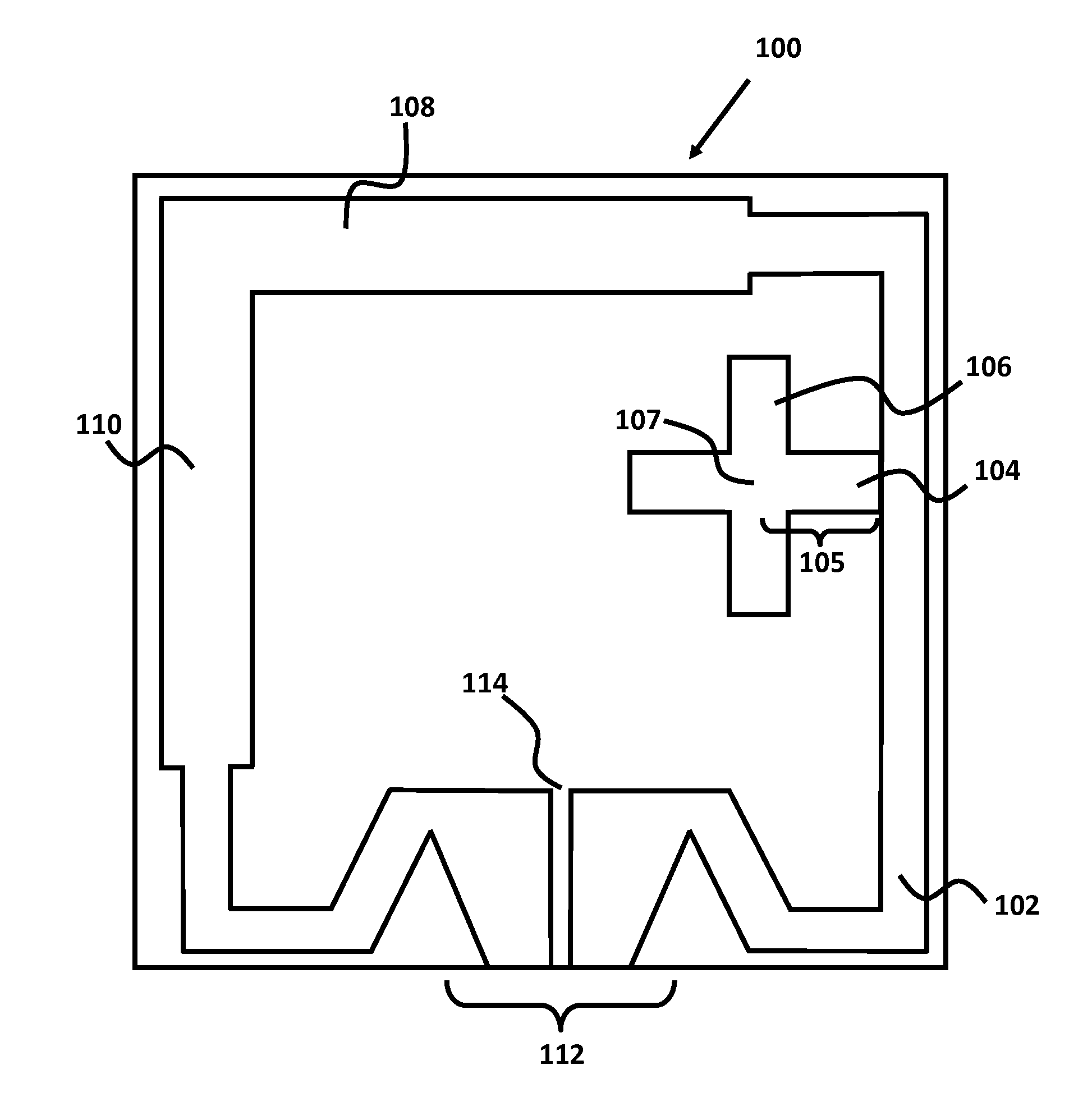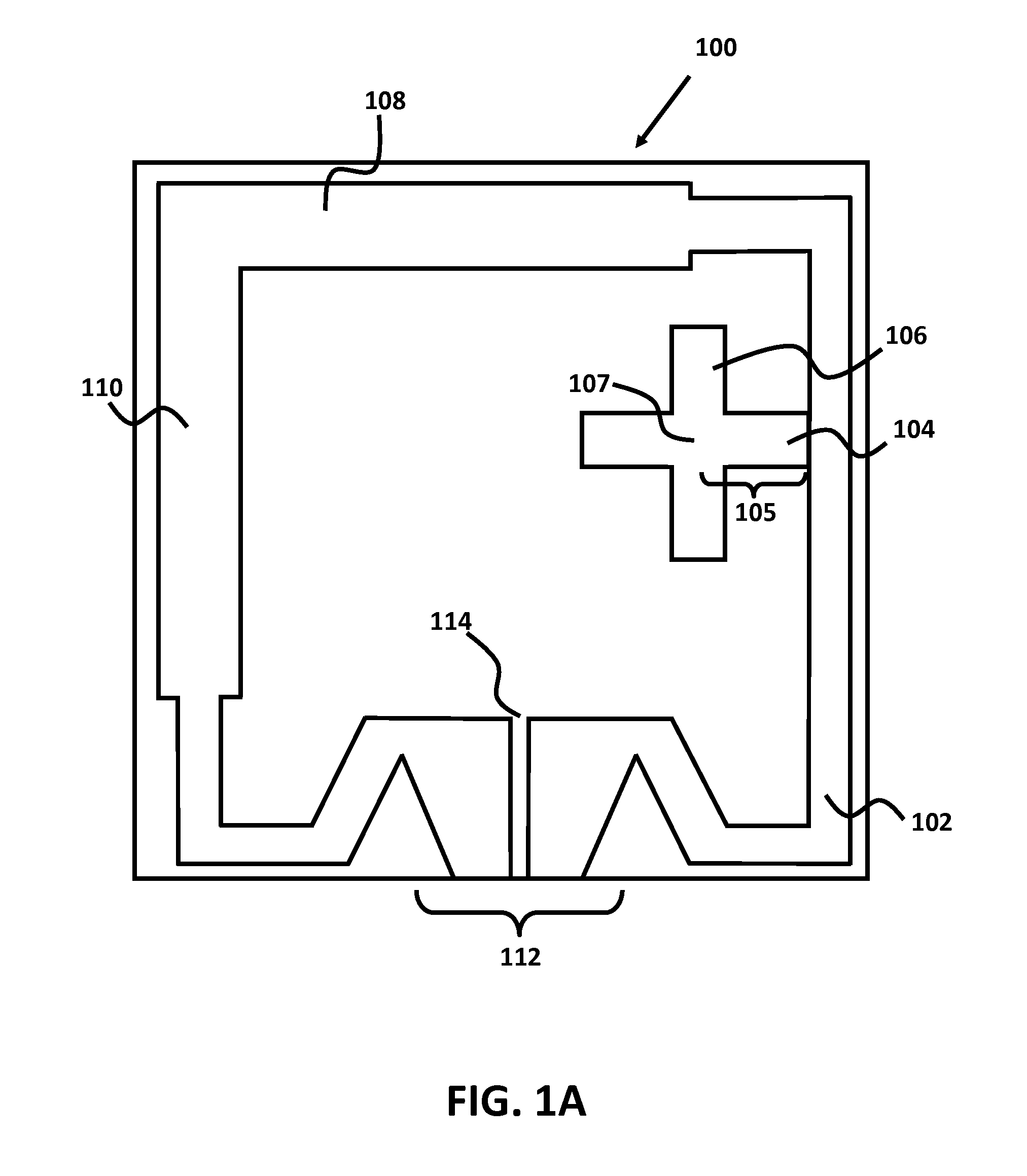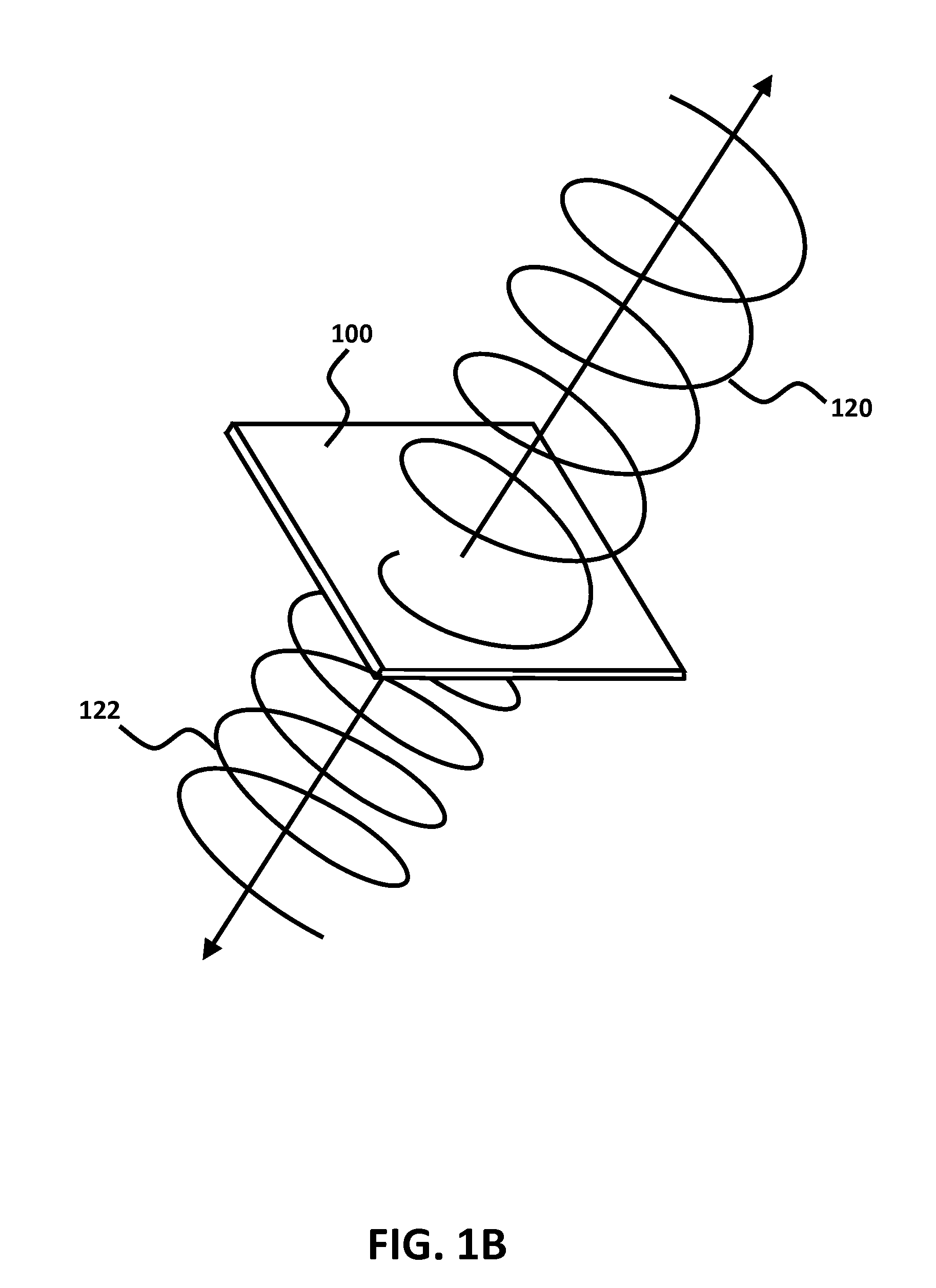Circular polarized compound loop antenna
a compound loop antenna and loop antenna technology, applied in the direction of loop antennas, elongated active elements, electrical equipment, etc., can solve the problems of low received power than would otherwise be possible, inability to use small loop antennas in practice, and not being typically suitable for transmitters
- Summary
- Abstract
- Description
- Claims
- Application Information
AI Technical Summary
Benefits of technology
Problems solved by technology
Method used
Image
Examples
Embodiment Construction
[0028]Embodiments provide single-sided and multi-layered circular polarized, self-contained, compound loop antennas (circular polarized CPL antennas). Embodiments of the circular polarized CPL antennas produce circular polarized signals by using two electric field radiators physically oriented orthogonal to each other, and by ensuring that the two electric field radiators are positioned such that an electrical delay between the two electric field radiators results in the two electric field radiators emitting their respective electric fields out of phase. Ensuring the proper electrical delay between the two electric field radiators also maintains high efficiency of the antenna and it improves the axial ratio of the antenna.
[0029]Single-sided compound loop antennas, multi-layered compound loop antennas, and self-contained compound loop antennas are discussed in U.S. patent application Ser. Nos. 12 / 878,016, 12 / 878,018, 12 / 878,020, which are incorporated herein by reference in their ent...
PUM
 Login to View More
Login to View More Abstract
Description
Claims
Application Information
 Login to View More
Login to View More - R&D
- Intellectual Property
- Life Sciences
- Materials
- Tech Scout
- Unparalleled Data Quality
- Higher Quality Content
- 60% Fewer Hallucinations
Browse by: Latest US Patents, China's latest patents, Technical Efficacy Thesaurus, Application Domain, Technology Topic, Popular Technical Reports.
© 2025 PatSnap. All rights reserved.Legal|Privacy policy|Modern Slavery Act Transparency Statement|Sitemap|About US| Contact US: help@patsnap.com



